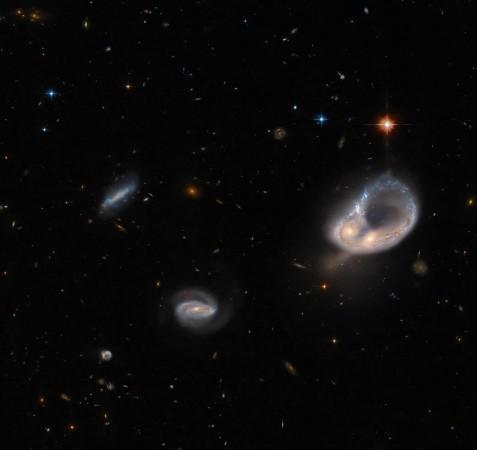It is 33 years ago that Hubble Space Telescope was placed in Earth's orbit to capture spectacular images of creation and destruction from the deep reaches of the universe.
"Hubble's launch and deployment in April 1990 marked the most significant advance in astronomy since Galileo's telescope," NASA said about Hubble's history.

NASA also added that the telescope had broadcasted wonder, beauty and mysteries of the universe to earth and pictures enlightening the hidden fantasies about the cosmos.
Over the course of years, the telescope assisted scientists to peer deep into space using visible, ultraviolet and infrared wavelengths.
The Hubble Telescope helped scientists to understand the age of universe, which is now touted to be 13.8 billion years. However, previous estimates were between 10 billion to 20 billion years.
Hubble helped to detect the rate at which the universe is expanding and also showed the presence of a blackhole at the centre of most of the galaxies.
Another notable contribution includes the discovery of two moons of Pluto, Nix and Hydra. The telescope also helped to create a 3-D map of dark matter, reports Royal Museum Greenwich, London.
"The telescope can see astronomical objects with an angular size of 0.05 arcseconds, which is like seeing a pair of fireflies in Tokyo that are less than 10 feet apart from Washington, D.C. ... (and) can spot a night light on the surface of the Moon from Earth," said Hubble, Space Administration.
Background
The telescope was named after the American Astronomer Edwin Hubble. He discovered that objects that were previously thought to be clouds of dust and gas and classified as nebulae were actually galaxies beyond Milky Way.
Hubble's works led to the discovery that the universe was expanding, invalidating scientists' expectation and eventually leading to the Big Bang model for the birth of the Universe.
Just weeks after placing it in orbit, Hubble Telescope sent its first images to earth in May 1990.
However, immediately after the placing, the telescope had to face a number of challenges including the discovery of a defective main mirror that limited its capabilities where the Space-walking astronauts fixed the problem in 1993.
The telescope began producing its most spectacular "Deep Field" images, astounding people around the world with the catastrophic beauty of the universe, by 1995.
"To date, the telescope has studied more than 40,000 cosmic objects, providing views astronomers were unable to capture from the ground," NASA said.
Circling the Earth every 95 minutes, Hubble continues to explore deep space even today.
The website of the Institute of Science and Technology in Kansas City stated that "Edwin Hubble is acclaimed as one of the great scientists of this century — one who was able to see what others looked for but didn't see. Because of his vision, he was a catalyst for a more sophisticated exploration of the universe, inspiring the creation of a deep-space telescope to see beyond what our earth-bound instruments could show."

















